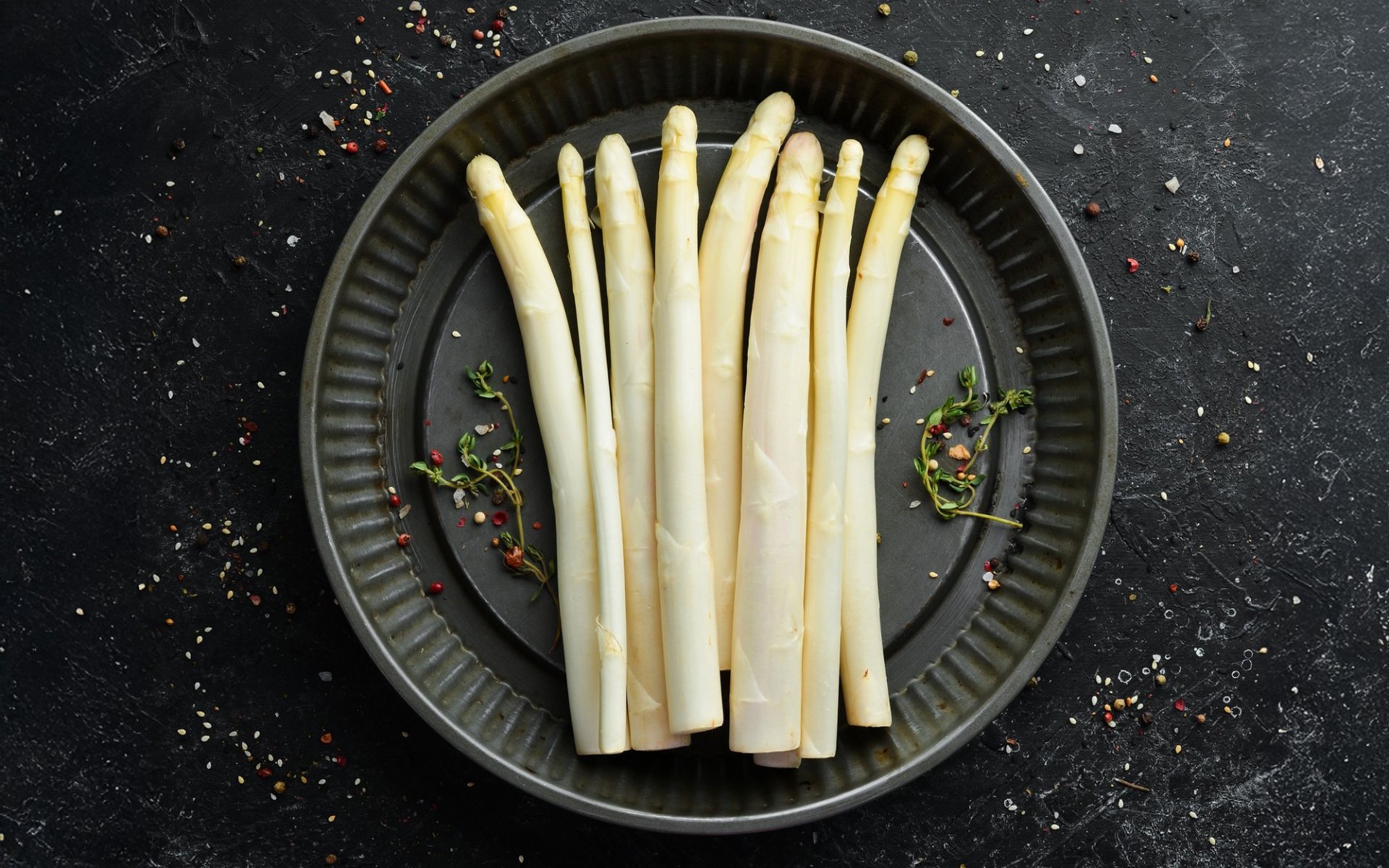White Asparagus

It's strange but true that White Asparagus is said to have originated by chance when someone accidentally dropped a cloth over green asparagus, preventing it from receiving sunlight and photosynthesizing, thus turning it white.
The History of Asparagus: From Ancient Medicine to a White Coincidence
Before the existence of white and other colored asparagus, the world's original asparagus was green asparagus, a species that has existed for thousands of years, native to the Mediterranean regions of Southern Europe. In Greek and Roman societies, green asparagus was used medicinally, credited with diuretic and aphrodisiac properties. Recipes for its preparation even appeared in Apicius's De re coquinaria Book 3, one of the oldest cookbooks from the Roman era.
However, in the 17th century, the appearance of white asparagus emerged by chance. Subsequently, its cultivation methods were advanced. This can be done by digging planting holes 10-15 centimeters deep in the soil, then mounding the soil high to block sunlight and using covering materials as the shoots emerge. This cultivation method is complex and requires a significant amount of labor, which is why white asparagus is more expensive than green asparagus.
Later, white asparagus was cultivated in Italy and several other European countries, such as Germany and Switzerland, becoming a popular delicacy among the upper classes. It was then introduced to France by Queen Catherine de Medici during the 19th century, and during the same period, it also began to gain recognition in the Americas.
A German Delicacy: Spargel
In Germany, white asparagus is a highly valued vegetable known as Spargel. It is celebrated during the Spargelzeit festival, which runs from April to June each year. This period is springtime, when white asparagus grows best and has the most delicious flavor. Therefore, white asparagus enthusiasts in Germany organize a White Asparagus Eating Festival. This tradition is held in several German cities, such as Schrobenhausen, Schwetzingen, and Abensberg, among others.
Almost every restaurant in these cities modifies its menus to feature multiple white asparagus dishes. There are asparagus seminars, asparagus tours, asparagus eating competitions, and in Schwetzingen, there's even a ceremony to crown a young woman as the White Asparagus Queen. Another significant highlight of this city is the statue of Spargelfrauen (Women of the Asparagus Field), which is highly admired and considered a major attraction for tourists visiting the city.
Additionally, in Schrobenhausen, Bavaria, Germany, there is also an asparagus museum. Because the people in this town have a particular fondness for asparagus, they dedicated a section of a museum to it, compiling its history, literature, poetry, cultivation, medicinal uses, and recipes. The museum's interior is adorned with paintings, ceramics, and even features a painting of asparagus in a Campbell's Soup can by Andy Warhol (the artist famous for his Campbell's Soup can paintings).
Harvesting Asparagus: White vs. Green
Green and white asparagus are cultivated using the same methods. However, white asparagus is harvested before it emerges from the soil and encounters sunlight. Conversely, green asparagus is harvested only after its shoots have emerged from the soil and undergone photosynthesis to produce chlorophyll, turning them green.
Generally, white asparagus is more expensive than green asparagus because it is a relatively rare vegetable, available for only a few months a year. The season for white asparagus typically begins in April and ends in June only, due to various factors affecting its growth and the particularly meticulous cultivation process required.
White Asparagus Nutrition: The "Queen of Vegetables"
The nickname White Gold of Europe is no exaggeration, as white asparagus is renowned as the Queen of Vegetables, rich in a variety of vitamins and minerals, including phosphorus, iron, zinc, and calcium. It also contains beta-carotene and numerous vitamins, such as C, B1, B2, B3, B5, B6, and B9. Furthermore, it contains carbohydrates, fats, sugars, protein, magnesium, manganese, and potassium.
Its properties include helping to promote urination, nourish the bladder, reduce stomach and intestinal acid, prevent cancer, nourish the skin, liver, and kidneys, help detoxify the body, prevent diabetes, prevent bladder stones, and help prevent heart disease.


